#chess history
Note
Let's hear all about the history of chess, please!
Chess is an analog live-action computer game or, "game," invented in the year 1212 B.Y.A. by Shatranj Al-Chessinventir. Designed to teach local rulers about warfare and defending their kingdoms, the game simulated a royal court and its pawns with game pieces. The original pieces were as follows:
King: The ruler of the court, if captured, means the end of the game. Mostly a figurehead, he can only move one tile at a time.
Queen: The most capable piece, she does the most work, but capturing her is unimportant because apparently a woman who can do anything is worth far less than a man who can barely move.
Bishop: Like a real bishop, this piece can only move diagonally, and whenever it takes another piece, it must pray for absolution or it will go to Chess Hell or, "Chell," and burn in Chess Fire or, "Chire," for all Chess Eternity or, "Next Round."
Knight: A knight must move in an L shape as per the rules of Tetris, from which the earliest chess games were inspired. The knight is represented by a horse in honor of Mazura of Parapa Palace.
Royal Piss-Bucket Emptier: Now known as the "Rook" due to Victorian prudery, the Royal Piss-Bucket Emptier runs as far as needed in any cardinal direction because the historical job entailed speed and resolute direction.
Pawn: Also known as a "Serf" or "Retail Clerk," the Pawn is expected to die young and be replaced quickly without the royals so much as noticing, so worthless and ordinary is this piece that just wanted to survive and be with their family. Should a pawn make it to the opposite side however, it can become a Queen or any other piece, a lesson designed to teach players that if they betray their family and join the ranks of the enemy, they will be rewarded with fame, fortune, and optional gender fluidity.
Though only about 24 possible games are playable with chess, two less than tic-tac-toe, many books have been written on Chess Theory by lonely people hoping to impress someone with how smart they think they are. This has sadly never worked.
Chess grew popular in America in the 60s and 70s due to the celebrity of chess master Bobby Fischer, but declined soon after when Fischer claimed that Jews were to blame for everything bad, Jews were evil, and he hoped that all the Jews would die. Being Jewish himself, he then died. He was then dug up again (f8=P?) and reburied by order of the Bishop (Bxf8#).
Chess has only recently made a comeback owing to new and interesting chess variants such as 4 Player Bughouse Chess, Three-Man Chess, 5D Chess with Multiverse Time Travel, and Checkers (with chess pieces because I forgot where I put the checkers).
The most interesting thing ever to happen in Chess occurred in 2021 when the Double Bongcloud Position was introduced to top competitions. And that sentence isn't even unreality.
169 notes
·
View notes
Text
Under Law XIII of the 1862 "Code of Laws of the British Chess Association", a pawn reaching its last rank had the option to remain as a pawn instead of being promoted.[Law XIII of the 1862 "Code of Laws of the British Chess Association" states: "When a pawn has reached the eighth square, the player has the option of selecting a piece, whether such piece has previously been lost or not, whose names and powers it shall then assume, or of deciding that it shall remain a pawn."][20] In his 1889 work The Modern Chess Instructor, Wilhelm Steinitz, the first World Chess Champion, endorsed this rule,[21] explaining its purpose by referring to the position diagrammed, which he cited from Johann Löwenthal's Book of the London Chess Congress, of 1862.
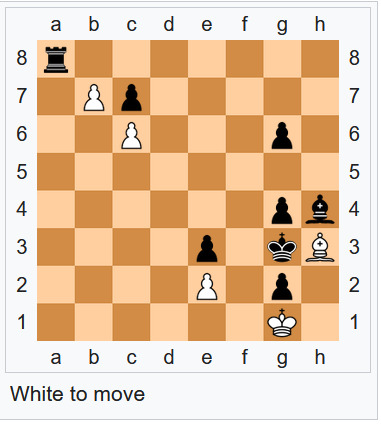
If White plays 1.bxa8=Q?? or any other promotion, Black wins with 1...gxh3, whereupon checkmate via 2...h2# is unstoppable. Instead, White draws by 1.bxa8=P!, when 1...gxh3 or 1...Kxh3 stalemates White, and other moves allow 2.Bxg2, with a drawn endgame.[22] Steinitz wrote, "We approve of the decision of the London Chess Congress, of 1862, although the 'dummy' pawn rule was denounced by some authorities."[22] The same rule and explanation are given by George H. D. Gossip in The Chess-Player's Manual.
The broad language of Law XIII appears to allow promotion to any piece of either color. This led to the whimsical joke chess problem illustrated. White is to play and checkmate in one move. No solution is possible under modern-day rules, but with Law XIII in effect, the surprising solution is 1.g8=black N#!, when the newly promoted knight blocks its own king's flight square.[24] Other amusing problems have been created involving promotion to a white or black king, which Law XIII also appears to allow.

Via Wikipedia
8 notes
·
View notes
Text

Persian manuscript describing how an ambassador from India, probably sent by the Maukhari King Śarvavarman of Kannauj, brought chess to the Persian court of Khosrow I.
The same scene from another manuscript.An illustration from a Persian manuscript "A treatise on chess". The Ambassadors from India present the Chatrang to Khosrow I Anushirwan, "Immortal Soul", King of Persia
From Wikipedia: https://en.wikipedia.org/wiki/History_of_Iran#/media/File:A_treatise_on_chess_2.jpg
#iran#india#iranian#persia#persian#chess history#chess#Maukhari#sasanian empire#sasanian dynasty#pre-islam persia#medieval#6th c. persia#6th century
6 notes
·
View notes
Text

The earliest known reference to the modern rules of how the Queen (♛) and Bishop (♝) move in the game of chess comes from the love poem Scachs d'amor, written in the year 1475 in Catalan-Valencian language by Francesc de Castellví, Bernat Fenollar, and Narcís Vinyoles.
The poem uses a chess match as an allegory for love. The poem's structure is also based on chess: it has 64 stanzas, just like a chessboard has 64 squares, and the stanzas are grouped to represent the movements of the chess pieces.
(Thank you @pomme-poire-peche for the information!)
#escacs#literatura#història#esports#chess#history#chess history#medieval#1400s#poetry#historical documents#país valencià#chesslove#chesslife
24 notes
·
View notes
Text
3 Fun Facts about Max Euwe
Euwe played a 10 game match against Alekhine in 1927 shortly before Alekhine's World Championship match against Capablanca later that year. He surprised the world by proving to be a tough opponent, losing narrowly 4,5-5,5.
Euwe is the only World Champion to go on to become president of FIDE.
Euwe played two matches against Bogoljubow for the title of FIDE Champion, separate from the World Championship, in 1928. He lost both 4,5-5,5.
3 notes
·
View notes
Text

Chess pieces made out of antler discovered in Northampton, England, circa the late 12th century. Chess, originally from the Arab world, was introduced to Europe via Persia, the Byzantine Empire, and the expanding Arabian empire. It became popular amongst the upper classes, who played with ornate pieces made out of elephant or walrus ivory. Less wealthy people played with less ornate pieces made out of materials such as antler and bone.
2 notes
·
View notes
Text
Click on the link to enjoy this special edition of the CalChess Journal dedicated to the life and legacy of Richard Shorman.
0 notes
Text
Opinion: FIDE Ban
I would like to profusely thank FIDE for their current ban on different genders in the sport, as few people in this modern age remember how much GENITALIA plays a part in chess. (in depth historical overview below, under the image)

I have been alive long enough to remember how things were before the internet and genitalia--mens' of course!--played a huge role in the chess world.
(Side note: I'm sorry to say I never got in to chess when I was younger; I feel I probably would have dominated the sport)
Strategically, contestants were supposed to whip out their penises at the beginning of a match and officials would measure them. The size of the penis--down to the fractions of an inch--would determine the length of time a player had to decide on making a move. The winner of the official pecker-measuring contest would choose, at the start of the game but BEFORE the measuring, whether the shorter or longer of the two dicks would be used to calculate that time.
This, of course, was completely upset by people with female genitalia entering the game, because, effectively, the choice then was between some length of time and zero. It was fairly common for chess champions to take on that zero, only to learn that people with female genitalia were better at snap decisions than the slower-paced, rational thinking, intellectual giants that were men (as proposed by Bobby Fischer and Ilya Smirin).
That's why everyone thinks that genitalia are not involved. It was Judit Polgar's win in '96 that forced FIDE to start using standardized times instead of dick-measuring contests and pictures of those contests have always been rare (due to an often-used rule protecting professional chess players from granting competitors a psychological advantage).
And thus, sadly, a truly important part of chess history was lost before the internet could preserve it.
Now, true chess afficianados may remember that the oldest chess sets featured a vast set of pieces that had penises on them: the King, knights, bishops, and rooks. Some were even solely composed of penises (to be specific, this has never, to my knowledge, included pawns).
In those older games, the Queen was an imaginary piece (not depicted), which is why she could "move" in any direction.
Knights had probably the most ornate cocks in the game, but they could only use them when bent.
Rooks are a fascinating case, because most modern chess players know them as a representative piece thrusting in to the sky. But the name "rook" came from the term "rok", which is Persian, and it meant a chariot thrusting forward. Pictured here: an ancient (and stylized) rok piece

But "rook" is not the only name for the piece. A rook was also called a rector, which is an ecclesiastical term, and that puts it on par with the bishops.
It should go without saying, given that we have a King, two bent knights, and four members of the clergy, that all of the pawns represent children.
Anyway, if anyone happens to dig up any more pictures of the oldest phallic chesspieces or, better yet, some of ye olde measuring contests (please make them safe for tumblr!), drop them to this thread. I'm feeling nostalgic.
Oh... and I should note that, mainly due to FIDE, my knowledge of chess is restricted to what folks term "Western" or "european" chess, so if you've got some specialized knowledge on other cultures, go for it.
#original#FIDE ban#trans rights#the sheer stupidity of patriarchy#transphobes can go fuck themselves#chess#chess history#parody#fuck the patriarchy
1 note
·
View note
Text





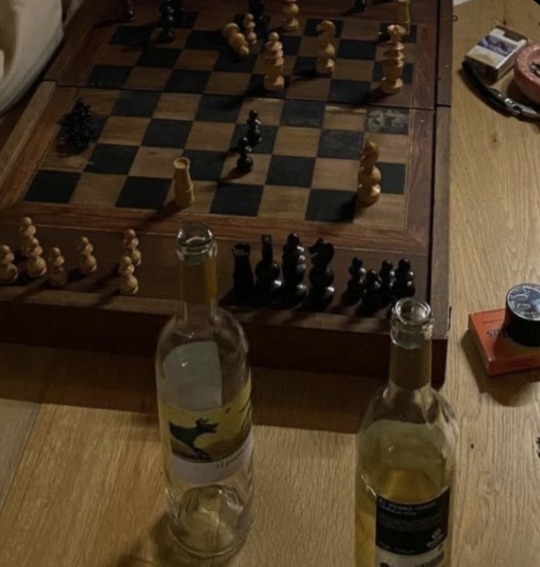
#autumn academia#dark academia#darkest academia#chaotic academia#books and literature#academia#dark romantica#dark romanticism#autumn aesthetic#fall academia#fall aesthetic#academia aesthetic#cozy aesthetic#cozy academia#romanticism#aesthetic#classic academia#the secret history#cigarettes and alcohol#chess aesthetic#books and reading
7K notes
·
View notes
Text
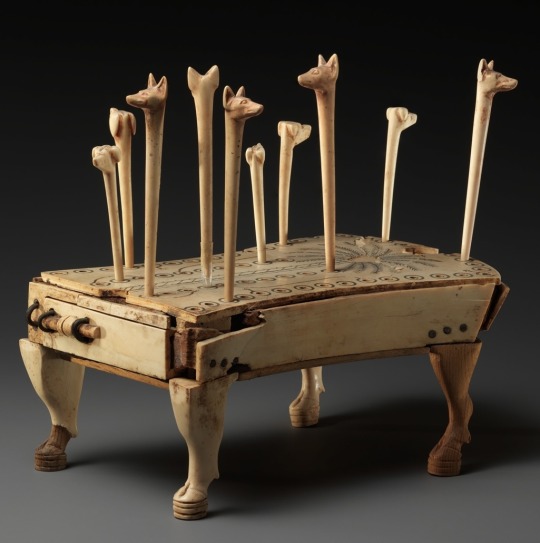
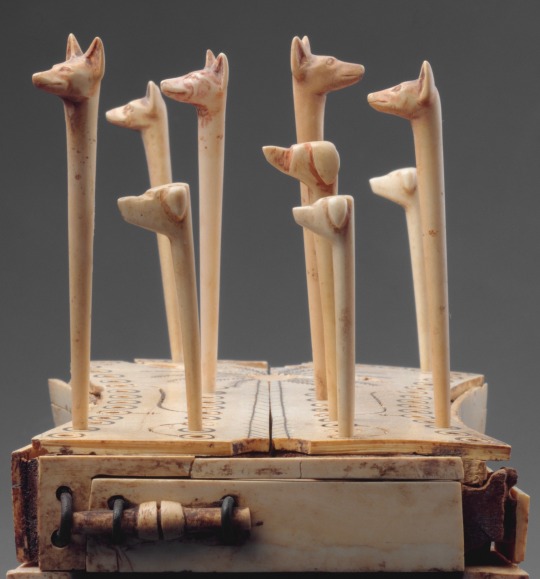
Egyptian
Game of Hounds and Jackals
Middle Kingdom, ca. 1814-1805 B.C.E.
#egyptian art#ancient egypt#ancient art#hounds and jackals#ancient history#artifact#antiquities#ancient people#ancient culture#egyptian history#egyptian culture#board games#chess#aesthetic#beauty#art history#aesthetictumblr#tumblraesthetic#tumblrpic#tumblrpictures#tumblr art#tumblrstyle#artists on tumblr#ancient artifacts
4K notes
·
View notes
Link
America's most embarrassing political exile until Edward Snowden.
#reviews#post by: inverarity#text by: frank brady#Biography: Bobby Fischer#chess#chess history#title: Endgame: Bobby Fischer's Remarkable Rise and Fall
0 notes
Text



Galactic Discourse Fanzine #2 | Merle Decker, Signe Landon, Laurie Huff | 1978
#royalty vibes#vulcan#are they getting married??? i'm still trying to figure out context for everything fnnfkfnf#sarek#star trek tos#star trek#tos#vintage#fan art#spock#BEAUTIFUL art#the chess match one uuuughhhh#spirk#fanzines#captain kirk#history
225 notes
·
View notes
Text

Chess set, 1900s, Nigeria.
161 notes
·
View notes
Text
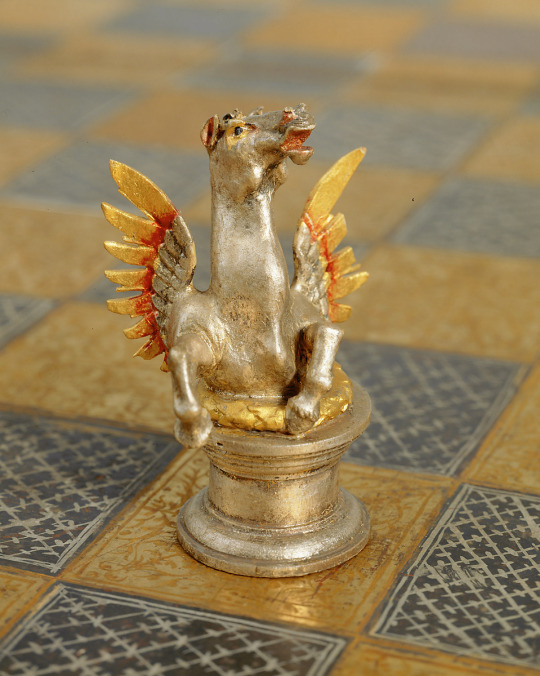

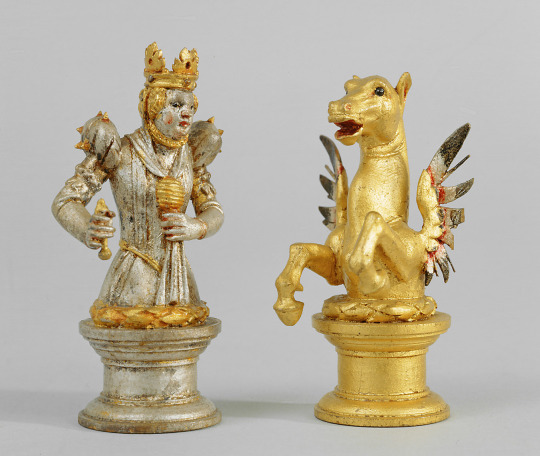
▪︎ Chess pieces.
Culture: South German (?)
Date: 16th Century (?)
Medium: Wood, oil, silver and gold paint
#art#history#16th century#decorative arts#history of art#chess#chess piece#chess pieces#south german
246 notes
·
View notes
Text
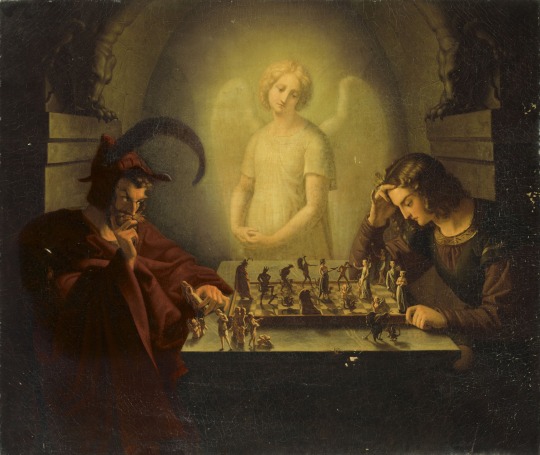
The Game of Life - by Friedrich August Moritz Retzsch
#chess#match#faust#mephistopheles#johann georg faust#friedrich august moritz retzsch#moritz retzsch#art#history#europe#european#german#germany#folklore#medieval#middle ages#angel#angels#devil#demon#demons#mephisto#doctor faustus#faustian
763 notes
·
View notes
Text
3 Fun Facts about Alexander Alekhine
He took chess lessons as a child from the master Duz-Khotimirsky.
He became a Doctor of Law in 1925.
In 1932, he set a new record of playing 32 blindfold games simultaneously, in Chicago.
2 notes
·
View notes